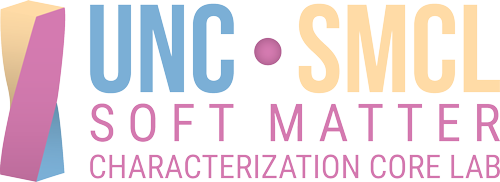The SM Core Lab has several new high performance cutting-edge instrumentation for thermoanalytical, spectrometry, rheological, and mechanical testing of soft materials. UNC and non-UNC customers may reserve time with one of our instruments after an initial basic operation and safety training with our staff. Also offered are instrument-specific theory and applications training for individuals or groups tailored to suit your needs. Please visit our Services and Rates page for a complete listing of services offered.
Available Instrumentation/Capabilities:
- Bruker UltrafleXtreme MALDI-ToF/ToF (located in the MS Core Lab, sample analysis and application consultation only)
- TA Instruments HR30 Hybrid DMA/Rheometer
- TA Instruments DSC250 Differential Scanning Calorimeter
- TA Instruments TGA5500 Thermogravimetric Analyzer
- Instron SC4-1 Universal Mechanical Tester (Available Soon)
- Optics 11 Piuma Nanoindenter (located in the CHANL Microscopy Core Lab)
MALDI-ToF/ToF Mass Spectrometer
NOTE: This instrument is available for sample submissions and consultation services only through the SM Core Lab. Reservations for self-use or operational training should be arranged through the MS Core Lab.
- Mass range up to ~600,000Da with mass accuracy of 1.5ppm
- Linear ToF resolution of 40,000Da
- Positive and negative ionization
- Applicable to a wide polarity range of polymers
- Samples do not need to be solubilized
- Highly sensitive and fast analysis – results in less than 3 minutes per sample!
- “Soft Ionization” – typically results to singly-charged species where mass-to-charge ratios observed are the same as the molecular mass.
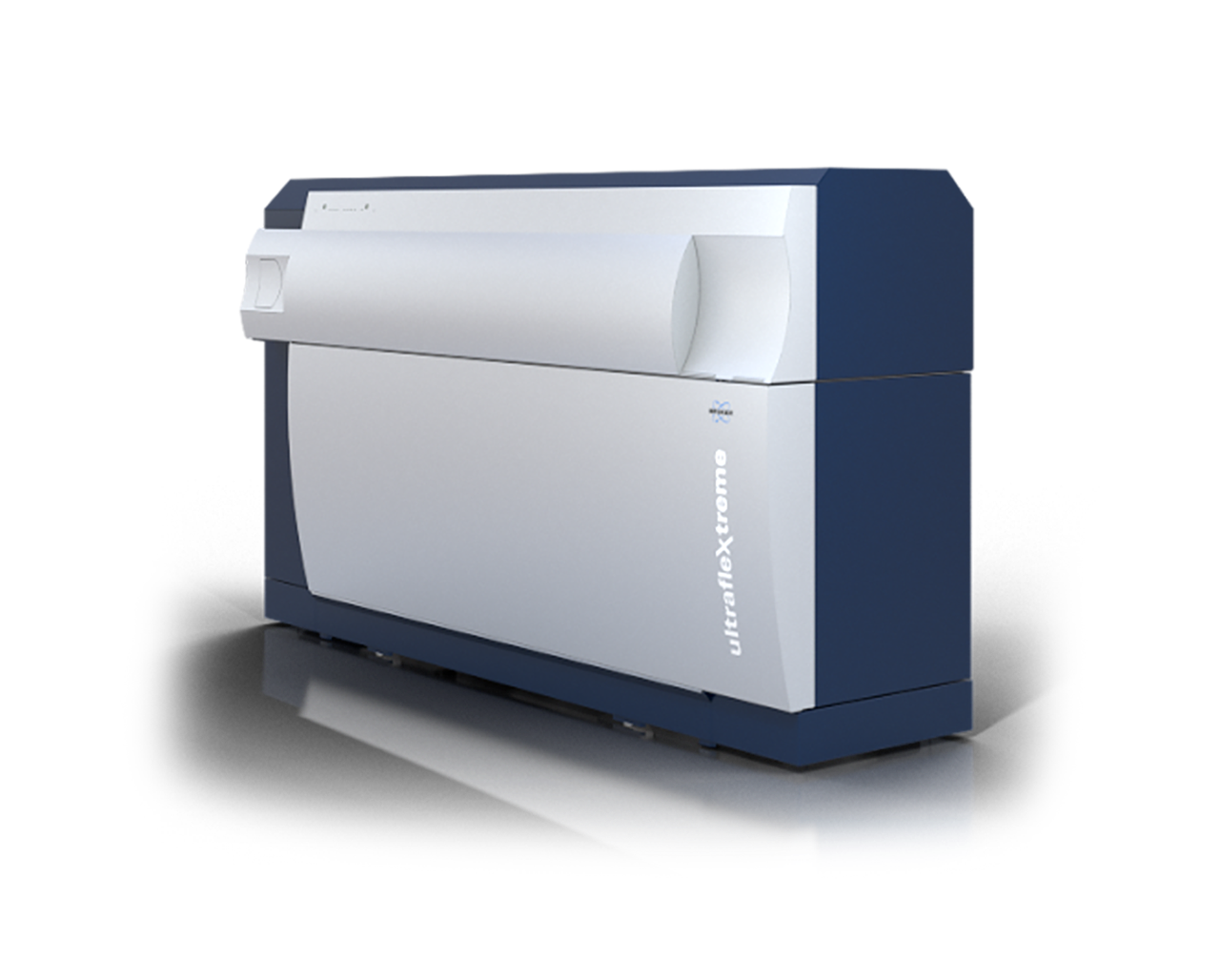
USES:
- Polymer average masses Mn and Mw
- Absolute MW determination of repeating units (resolution of individual n-mers)
- Sum mass of the homopolymers end-groups, dispersity Đ, and degree of polymerization
- Tandem MS/MS analysis
- Determine composition homogeneity of synthetic polymers
Hybrid DMA/Rheometer
- Patented Magnetic Bearing for superior torque sensitivity (200mN.m maximum and 0.05 mN.m resolution)
- Patented Optical Encoder Dual Reader for improved displacement resolution leading to more precise shear rate and small amplitude oscillatory strain measurements (2 nrad resolution)
- Linear Dynamic Mechanical (DMA) measurements with maximum 50 N axial force and controlled axial oscillations permitting direct measurement of E’, E”, and tan δ in tension, bending (not available), and compression for identifying a material’s transition temperatures
- Smart SwapTM Technology allows quick, user-friendly accessory and geometry installation
- Environmental Thermal Chamber (ETC) offers a combination of radiant and convective heating from -160 °C to 600 °C with heating rates up to 60 °C/min
- Advanced Peltier provides lower plate temperature control from -20 °C to 150 °C and heating rates up to 50 °C/min with ± 0.1 °C accuracy
- UV Curing Accessory with variable light source (320nm – 390nm, 365nm, and 400nm – 500nm filters)
- A host of accessories and geometries available to suit your testing needs including film tension, extensional viscosity (EVA), and solvent trap accessories, and a variety of cone and plate geometries. A complete listing of available accessories and geometries is available in our Services webpage.
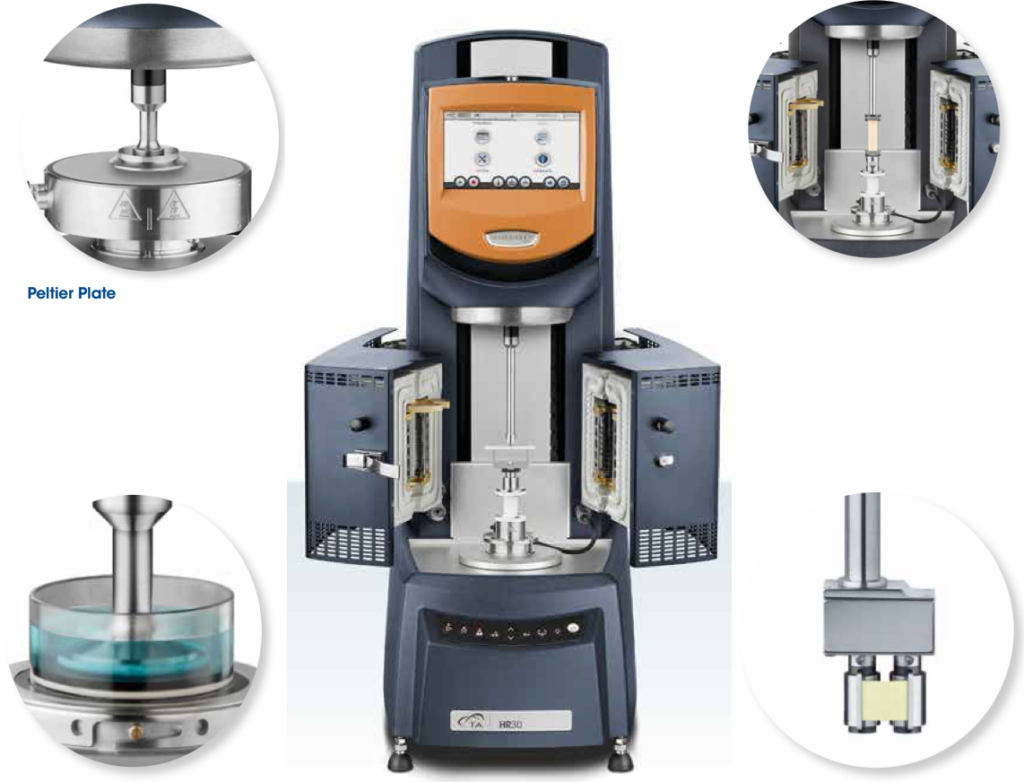
USES:
Rheometry
- Viscosity or viscoelasticity
- Shear-Strain curves
- Yield stress, thixotropy, creep compliance and stress relaxation behavior
- G’, G” phase angle storage and loss modulus, and tan δ
- Extensional rheology measurements using the EVA accessory
- Monitoring of material properties during UV or temperature curing
DMA
- Stress-Strain curves
- E’, E”, tan δ
- Tensile, compression, shear, peel, tear, and friction testing using the EVA accessory
- Tensile testing of films and fibers using the tension accessory
- Temperature dependent mechanical testing using the Environmental Thermal Chamber (ETC)
- Glass transitions
- Parallel plate compression testing
Differential Scanning Calorimeter (DSC)
TA Instruments Discovery DSC250
- Advanced T4P Tzero heat technology with unique capability to conduct and store heat capacity in a single run while offering accurate real-time determination of heat flow, sharper resolution, and highest sensitivity
- Modulated DSC (mDSC) measurement capability for deconvolution of complex and overlapping transitions, detecting weak transitions, more accurate initial crystalinity measurement, and determination of heat capacity
- 54-position autosampler
- Wide temperature range from -180 °C to 550 °C using TA Instrument’s liquid nitrogen cooling accessory
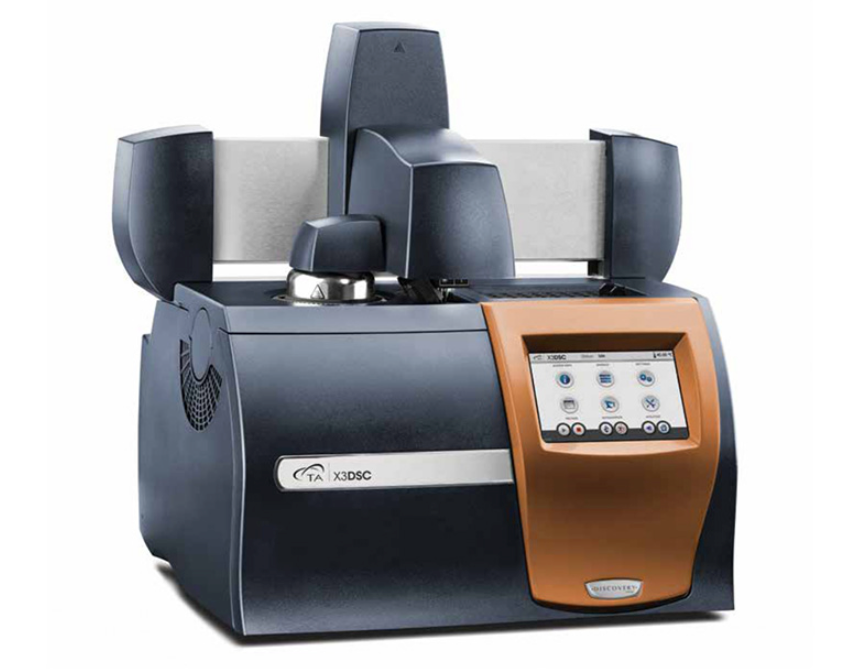
USES:
- Tg, melting, and freezing transitions
- Heat capacity
- Purity determination
- Deconvolution of overlapping transitions
Thermogravimetric Analyzer (TGA)
TA Instruments Discovery TGA5500
- Infrared furnace for highest heating and cooling rates
- Tru-MassTM Balance technology providing exceptionally high sensitivity and resolution and ultra-low drift for weight accuracy enabling Hi-Res TGA measurements
- 25-position autosampler
- Temperature range from ambient to 1200 °C
- Linear controlled heating rates of 0.1 to 500 °C/min
- Can be operated in Modulated TGA and Auto-Stepwise TGA modes to produce model-free kinetic data and real-time direct determination of activation energy as a function of time, temperature, and conversion
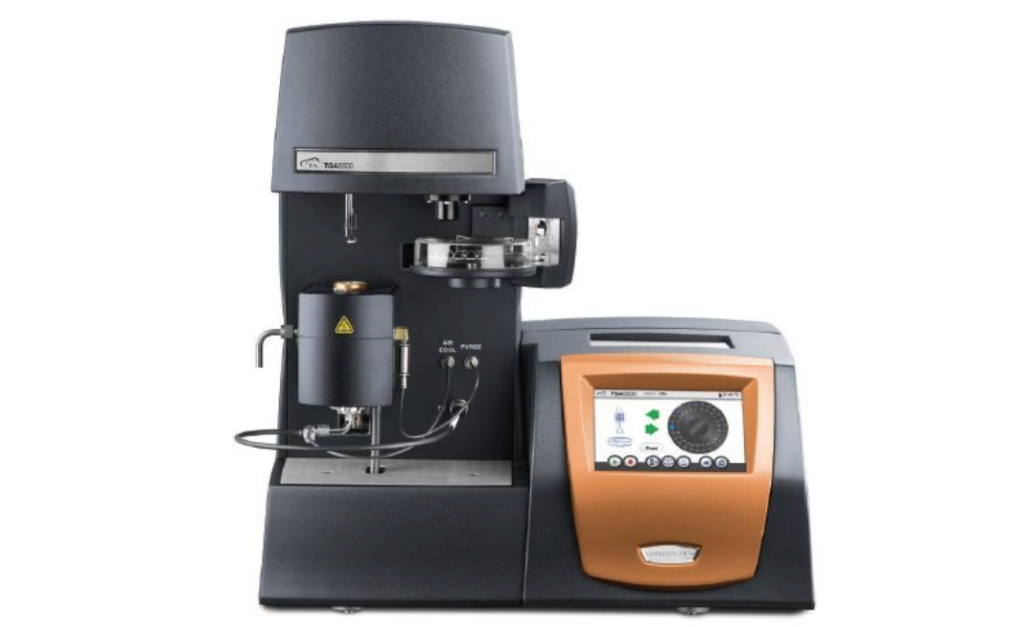
USES:
- Simple and complex mixture decomposition temperature(s)
- Decomposition kinetics
- Quantify loss of water and volatiles
- Composition of multi-component systems
- Weight % residual (ash)
- Activation energy
- Effects of reactive atmosphere
Universal Mechanical Tester (available soon)
Instron 34SC-1 Single Column Universal Tester
- Maximum 1kN load cell force capacity
- 41.3 in (1050 mm) vertical test space and 3.9 in (100 mm) horizontal test space
- Traverse speed from 0.002 in/min (0.05 mm/min) to 40 in/min (1016 mm/min)
- Simple, intuitive Bluehill Universal software with large touchscreen display
- Pneumatic 25mm wide rubber or serrated grips for easy handling and added reproducibility
- Stress-strain measurements and tensile tests
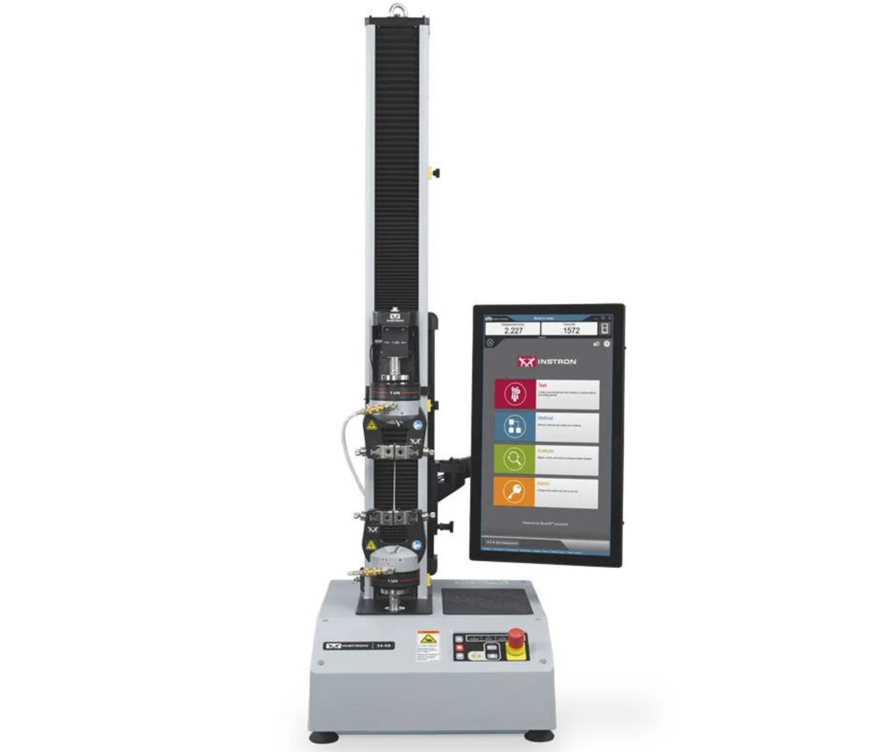
USES:
- Stress-Strain curves
- Tensile modulus, Young’s modulus
- Yield point, strain at break
- Determination of material toughness
- Compression deformation or deflection as a function of load applied including fatigue tests, compression tests, and flexure tests
Nanoindenter
The Nanoindenter is located in the CHANL Microscopy Core Lab managed by Carrie Donley. The nanoindenter utilizes an AFM-like probe or tip that is lowered into contact with the sample surface under a pre-defined load.
- Indenter dimentions: 120 x 150 x 280 (mm, WxLxH)
- Modes of operation: Displacement, Load, Indentation
Dynamic frequency range: 0.1 – 10 Hz - Displacement stroke: 20 um
- Lateral scan range: 12 x 12 mm
- Minimum lateral pitch: <1 um
- Probe
Stiffness range: 0.02 M/n – 100 N/m
Force range: 20 pN – 2 mN
Noise level: 1 nm
Young’s modulus range: 1 Pa – 1 GPa
Probe material: Glass
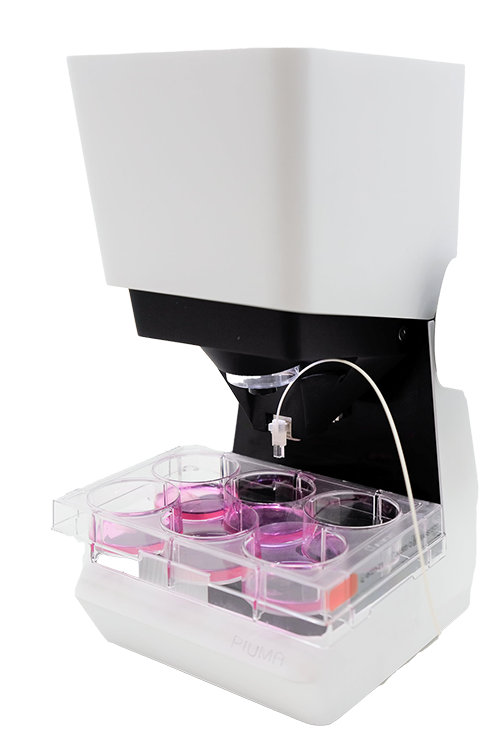
USES:
- Elastic modulus
- Measure viscoelastic properties of samples in air or liquid
- Localized modulus measurements from micron-sized samples to slides
Do you need an accessory or geometry we don’t have?

If you have a specific rheology or mechanical test for which we do not have an accessory or geometry available, we invite you to contact us. We would love to discuss your needs and how our laboratory can perhaps meet them and find a solution mutually beneficial to your lab and the SM Core Lab.
